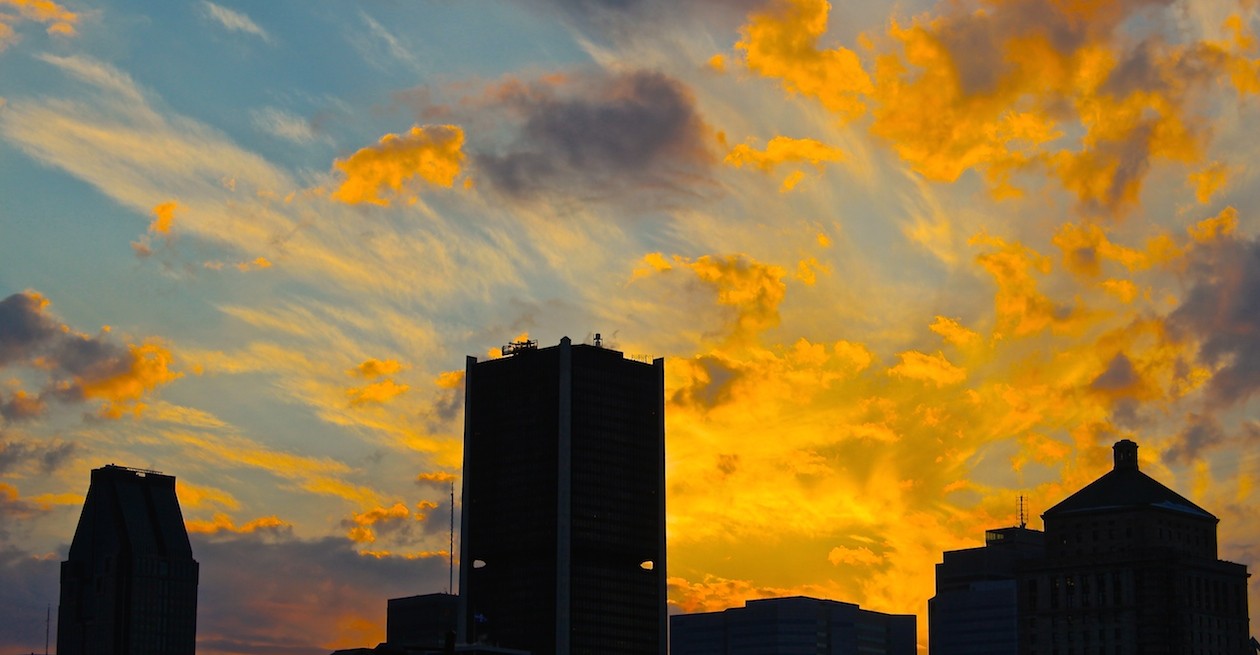
So a recent article on Coolopolis piqued my curiosity. It features an interview Kristian Gravenor did with a man by the name of Billy Georgette, who has been doggedly pursuing local officials, politicians and people of influence to do something about the former Victoria Rink.
For those of you unfamiliar with the rink, it is the long, squat brownstone building between Stanley and Drummond, just north of Boul. René-Lévesque. It is currently a parking garage, a role it assumed in 1925 when the arena closed to the public as it had become obsolete. It was first built in 1862 at what would have then been the very heart of the Square Mile neighbourhood. It was an instant success, with the Victoria Skating Club reaching some 2,000 Montrealers by the 1870s. It was a natural ice rink, meaning that it could only be used when the surface could be frozen over. Though this is impractical for a modern professional arena, back then hockey was in its infancy, and this arrangement would have made it exceptionally easy to use the space for other purposes, such as concerts, receptions, congresses and the like. It was first in a long tradition of multiple-use venues in Downtown Montréal.
So what? It’s an old rink, what’s so special? you might be asking. Well, it is at the Victoria Rink that the first organized game of modern ice hickey was played, in 1875.
That, and it set the dimensions for the modern ice-hockey surface – roughly the distance between Stanley and Drummond.
Oh, and it was also the location of the first Stanley Cup game (which we won).
And it was the first building in Canada to be electrified.
Then Edison and Tesla showed up.
Not to mention Lord Stanley, who took in his first hockey game (which we won) at the rink, and was reported to have been thoroughly delighted with the spirited game.
Suffice it to say, this building is a major historical landmark, for Montréal, Québec and Canada.
And it sucks that it has survived for no other reason than the fact that people need a place to park. Oh well, at least its still with us. And it deserves better. This building ought to be a shrine, and there’s a movement afoot to do just that. The word is that certain people may be interested in seeing this building converted into a new facility, though the question remains as to what exactly it ought to be.
So, on a lark, here’s what I’d propose.
We need look no further than the building’s history to see what should be done with this building. What if we were to convert it back into a functional ice-rink? Take it a step further – what if we were to endeavour to bring the building back to its original grandeur? An authentic Victorian skating rink, renovated to look as it did in 1875, when the first hockey game was played. Perhaps we’d choose to forgo the gas-light chandeliers, but you get the idea. In the spirit of urban architectural heritage preservation, this project has all the potential to be a great achievement for the citizens of Montréal.
In addition to recreating the ice surface, a portion of the building, or perhaps an adjoining structure (there’s a big empty lot immediately to the North), could feature a ‘Montreal Hockey Museum’, though I can imagine the main draw would be simply to skate around a beautifully restored antique skating rink. A similar idea has been applied to the design of modern baseball stadiums in the States, and there are specially designed ballparks for the modern deadball leagues becoming popular down South (in essence, its baseball played the way it was when originally created, in the Antebellum Period). I have a feeling it wouldn’t be long before ‘old-time-hockey’ leagues were formed here – what a draw that would be!
And finally, much like the original, it would be a multi-purpose facility, and could easily be used as a medium sized general-purpose venue, which our city happens to be lacking. The location is exceptional, and there’s a well-developed local industry capable of not only thoroughly renovating this building, but further able to restore it to its former grandeur. From everything I’ve read, the building, due to its prominence in the lives of the late-19th century Montréal bourgeois is well described, was quite beautiful. There’s no question it is a heritage building, but like too many other heritage buildings, it survives without sufficient recognition of its historic importance. The best way to this history justice is to ensure the building’s use, in perpetuity. Moreover, Montréal needs a hockey museum, because hockey is a social phenomenon here, and a quintessential part of our lives.
What can I say further? What do you think we should do with the Victoria Rink?












